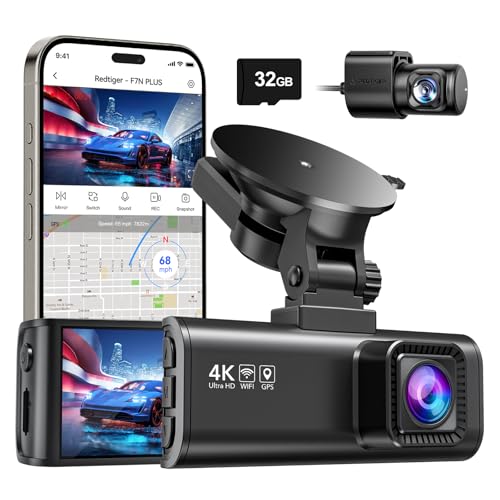Key Takeaways
- Professional 360 cameras excel in capturing high-resolution, immersive visuals, making them essential for high-budget filmmaking, VR, and marketing projects.
- Top features include resolutions up to 12K, advanced HDR for lifelike color accuracy, and seamless stitching for smooth, immersive frames.
- Durable and modular builds, with features like interchangeable lenses and external power options, ensure reliability in demanding environments.
- Integration compatibility with popular post-production software simplifies workflows, saving time during editing and content creation.
- These cameras cater to diverse use cases, including cinematic filmmaking, virtual tours, and training simulations, providing versatile value for professionals.
- While offering exceptional performance, high-end 360 cameras come with steep prices, technical learning curves, and storage-intensive footage requirements.
When it comes to high-budget projects, capturing immersive, high-quality visuals is non-negotiable. That’s where professional 360 cameras shine. These advanced tools offer unparalleled capabilities, making them essential for filmmakers, virtual reality creators, and marketing professionals aiming to deliver cutting-edge content.
I’ve explored the top-tier options designed to meet the demands of large-scale productions. From stunning resolution to seamless stitching, these cameras bring innovation to the forefront. If you’re investing in premium equipment, understanding what sets these devices apart is key to making the right choice.
Overview Of Professional 360 Cameras
Professional 360 cameras combine cutting-edge technology with exceptional craftsmanship, delivering industry-grade performance for large-scale productions. These devices are engineered to capture immersive visuals with seamless precision, making them indispensable for high-budget photography and videography projects.
Features of Professional 360 Cameras
High-resolution imaging options, often achieving up to 12K or more, ensure exceptional clarity. Advanced HDR (High Dynamic Range) capabilities enhance image depth and color balance. Examples include RED’s Helium 8K and Insta360 Titan, which surpass standard consumer devices.
Robust stitching algorithms create smooth transitions between captured frames, eliminating visible seams in the final output. Cameras like the Kandao Obsidian Pro excel in this regard, offering cinematic-level quality for VR applications.
Durable and modular designs support intensive workflows. Many models feature interchangeable lenses, external audio input compatibility, and dual SD slots to cater to diverse project needs.
Use Cases for Professionals
Cinematic filmmaking benefits from these cameras’ ability to shoot high-resolution, hemispherical views with minimal distortion. For instance, production teams use the Insta360 Pro 2 in mainstream VR narrative projects due to its stable performance.
Marketing professionals rely on professional 360 cameras to produce captivating immersive content, such as VR tours or experiential ad campaigns. Popular choices include the Vuze XR for its balanced versatility.
Virtual reality developers integrate these cameras with advanced post-production software to create interactive, immersive experiences. Output from cameras like the Z Cam K2 Pro offers superior consistency for such applications.
« Action 360 Cameras vs. Traditional GoPros: Which One is Best for Your Adventures?
Discover the Top 5 Security 360 Cameras That Redefine Smart Surveillance »
Each feature and use case enhances the opportunity to create stunning and technically superior outputs, catering to the high demands of premium projects.
Key Features To Consider
When selecting a professional 360 camera for high-budget projects, specific features define performance and functionality. Based on my experience in designing and using these cameras, I’ve identified the most critical aspects to evaluate.
Resolution And Image Quality
High resolution is essential for producing sharp, immersive visuals. Many professional 360 cameras deliver resolutions ranging from 8K to 12K. For example, the Insta360 Titan achieves 11K resolution, offering stunning clarity, while some models include advanced HDR capabilities for enhanced color accuracy. Opt for cameras with excellent dynamic range to avoid issues in low-light or high-contrast environments.
Durability And Build Quality
Premium 360 cameras should withstand tough shooting environments. Designs often include materials like magnesium alloys or reinforced plastics, providing durability without excessive weight. Models like the Kandao Obsidian Pro are built to endure field conditions while ensuring stability during extended shoots. Splash resistance or weather sealing adds extra reliability for outdoor projects.
Software And Compatibility
Seamless integration with post-production software is vital. Top models offer proprietary stitching software and support for platforms like Adobe Premiere Pro and DaVinci Resolve. For instance, the Insta360 Pro 2 includes FlowState stabilization and real-time stitching tools, streamlining workflows. Check compatibility with VR platforms if your goal is virtual reality content.
Battery Life And Power Options
Long-lasting power is critical during extensive shoots. Many professional 360 cameras include swappable batteries or external power options. For example, the VR camera Z Cam V1 utilizes interchangeable battery systems, extending runtime beyond three hours. Some models support continuous shooting via USB-C power supplies, ensuring uninterrupted performance for high-budget projects.
Top Professional 360 Cameras For High-Budget Projects
Professional 360 cameras are game-changers for capturing immersive, high-quality visuals. After extensive testing and experience, I’ve identified three standout options that excel in resolution, durability, workflow integration, and advanced features.
Camera 1: Features And Performance
The Insta360 Titan offers exceptional performance for cinematic-grade projects. It captures up to 11K resolution and uses eight Micro Four Thirds sensors, delivering superior dynamic range and low-light performance. I’ve found its in-camera 10-Bit HDR to be ideal for projects demanding rich color depth.
Its FlowState stabilization ensures smooth footage, even during complex shooting conditions. With 9-axis stabilization and advanced stitching algorithms, transition seams are virtually invisible. Real-time preview through the Insta360 app makes on-set monitoring seamless.
The Titan supports various professional workflows, integrating well with Adobe Premiere Pro and Final Cut Pro for post-production. It’s housed in a robust aluminum body, ensuring durability in outdoor shoots.
Camera 2: Features And Performance
The Kandao Obsidian Pro is built for versatility and ultra-detailed imagery. With 12K resolution and 24-stop HDR, it excels in delivering sharp, immersive content. Its six APS-C sensors produce unparalleled image clarity and depth.
When testing its advanced stitching, I observed near-perfect frame blending that enhances visual immersion. The Obsidian Pro also offers ProRes RAW recording, simplifying color grading and post-production adjustments.
Multiple connectivity options like Ethernet and Wi-Fi streamline remote operations for complex setups. The ruggedly designed magnesium alloy build provides excellent heat dissipation, perfect for long shoots in demanding environments.
Camera 3: Features And Performance
The Z CAM V1 Pro stands out for its compact form factor combined with professional-grade capabilities. Offering up to 7K resolution with 10-bit color depth, it achieves cinematic-level visuals suitable for VR filmmaking and virtual tours.
Its seamless stitching and minimal distortion have impressed me during spherical panoramic productions. The high-speed HDMI, SDI, and Ethernet outputs enable real-time preview and efficient live streaming.
The V1 Pro supports external SSD recording, allowing extended shooting hours without interruptions. Its lightweight carbon fiber construction ensures portability and durability, making it ideal for both indoor and outdoor high-budget projects.
Use Cases Of Professional 360 Cameras
Professional 360 cameras excel in high-budget projects requiring immersive, high-quality visuals. Their advanced features make them indispensable tools for several industries.
Film And Media Production
Professional 360 cameras deliver stunning cinematic visuals, making them essential for filmmakers and cinematographers. Their ability to capture resolutions of up to 12K ensures exceptional detail, enhancing visual storytelling. For example, directors can use these cameras to shoot immersive scenes for feature films or documentaries, providing viewers with a more engaging experience. Advanced stabilization and HDR capabilities also ensure smooth and vivid footage, even in challenging environments, making them ideal for action sequences and nature cinematography.
Virtual Tours And Real Estate
360 cameras transform real estate marketing through highly interactive virtual tours. Agents can showcase properties by capturing every angle, allowing potential buyers to explore spaces remotely. For example, luxury real estate listings often use 12K-resolution virtual tours to impress clients with exceptional clarity and depth. These cameras also help architects and interior designers visualize and share projects, streamlining collaboration with stakeholders. Their ability to capture both indoor and outdoor scenes seamlessly makes them particularly effective for showcasing landscapes or architectural details.
Training And Simulation
Training professionals rely on 360 cameras to create realistic simulations for education and skill development. High-resolution visuals, paired with VR integration, immerse users in controlled scenarios. In industries like aviation and healthcare, these cameras record scenarios for pilot training or surgical simulations, ensuring accuracy and detail in critical environments. For example, trainees can interact with lifelike environments, significantly improving preparation and decision-making skills. The capability to capture scenarios from all angles speeds up content creation and enhances the training’s overall effectiveness.
Pros And Cons Of Investing In High-End 360 Cameras
Understanding the advantages and limitations of high-end 360 cameras can help you decide if they’re the right choice for your projects.
Pros
- Exceptional Image Quality
Professional 360 cameras deliver resolutions up to 12K (e.g., Kandao Obsidian Pro), creating stunning clarity. This level of detail is essential for virtual reality content and cinematic projects. Advanced HDR ensures lifelike colors and sharp contrasts.
- Seamless Stitching
High-end models use robust stitching algorithms to produce smooth frames without distracting seams. This feature is vital for immersive viewing experiences where small imperfections can break immersion.
- Versatile Applications
These cameras excel in diverse fields like filmmaking, training simulations, and marketing. For example, 360 videos enhance real estate tours by showcasing properties interactively or improve training sessions with detailed, realistic scenarios.
- Professional Build Quality
Durability is a standout feature in premium 360 cameras. Devices like the Insta360 Titan withstand challenging environments, making them ideal for demanding outdoor or on-location shoots.
- Efficient Workflow Integration
Top models integrate seamlessly with common editing software, like Adobe Premiere Pro, saving time during post-production. This reduces workflow bottlenecks and supports faster delivery of polished content.
Cons
- High Cost
Investing in high-end models requires a significant budget, often ranging from $5,000 to $15,000. While the quality justifies the price, it might not suit everyone financially.
- Steep Learning Curve
Operating professional 360 cameras can be challenging for beginners. Advanced features like manual calibration and stitching adjustments demand technical expertise.
- Bulky Designs
Some models, such as the Z CAM V1 Pro, are not as portable due to their size and weight. This limits their use for quick, on-the-move shoots.
- Intense Processing Requirements
Ultra-high-resolution footage, such as 12K, demands powerful editing systems and storage capacity. This can increase costs and complicate workflows.
- Limited Battery Life
Although designed for extended use, recording in top resolutions drains battery quickly. Carrying multiple battery packs becomes essential for long shoots.
Conclusion
Professional 360 cameras are game-changers for high-budget projects, offering unmatched quality and immersive capabilities. Their advanced features and versatility make them indispensable tools for industries like filmmaking, virtual reality, and marketing. While they come with challenges like high costs and a steep learning curve, their potential to elevate content creation is undeniable. For those ready to invest, these cameras provide the cutting-edge technology needed to meet the demands of premium productions.














